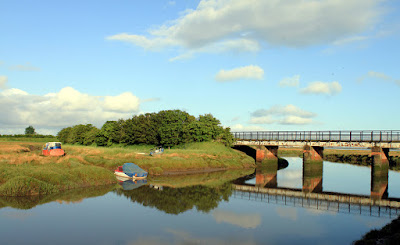The days have flown since Andy and I did any ringing at Oakenclough. The centres of attention in late May and early June were Pied Flycatchers in nest boxes together with sussing out the few pairs of Willow Warblers nesting in the clumps of heather and bilberry. Today we returned to the hills to do a little management of the netting area of the plantation and once that was done, attempt a little ringing.
A catch of just 8 birds may have confirmed our worst fears about the breeding success of many species in this soggy, windswept year with a catch of just 2 Willow Warblers, 1 Chiffchaff, 2 Dunnock, 1 Goldfinch, 1 Great Tit and 1 Blue Tit.
Willow Warbler
Chiffchaff
Despite the low catch there did seem to be good numbers of Goldfinches around including the first real flock of summer when 18/20 flew over without landing near the nets and a total of 40+ on site throughout the morning. In recent years our UK Goldfinch seems able to both survive and prosper whatever the weather. Otherwise and in the finch department we noted 15+ Lesser Redpoll as flyovers plus a handful of Siskins on the move.
Also “round and about” - 20+ Swallow, 15+ Chaffinch, 3 Pied Wagtail, 2+ Nuthatch, 1 Great-spotted Woodpecker, 1 Tawny Owl, 1 Jay, 1 Grey Wagtail.
At home and in the garden this week a couple of normally very shy Stock Dove (Columba oenas) have been regular visitors around the feeders left out for the local House Sparrows. The Stock Doves are often in the company of one or two Wood Pigeon (Columba palumbus), their close relative. Although Wood Pigeons are now very common garden birds the Stock Dove is a rare garden visitor in this area. It is not the first time I have seen Stock Doves in the garden, they are becoming more regular, and I am wondering if this is the next species to exploit the British pastime of feeding birds?
It’s perhaps easy to overlook the Stock Dove, dismiss it as a lost racing pigeon or a even feral urban pigeon but the species is a very distinctive blue-grey with a pinkish breast and an iridescent green patch on the side of the neck. There is no white patch on the neck, like on an adult Wood Pigeon, and it is darker than the Wood Pigeon. One of the better differentiating features is their black eyes. The bill is yellowish and the legs are pink. They have a black tipped tail and two small black wing-bars on each wing which are less distinct than the wing-bars on a Rock Dove.
Stock Dove
House Sparrows may have bucked the poor breeding trend this year as I am seeing good numbers of them in a number of places I visit or pass by. There are reasonable numbers of Goldfinch coming to the Niger feeders, including good numbers of juveniles, but as yet there is lots of natural food to be found, so no need to visit garden feeders in huge numbers.
Goldfinch
There’s more birding this weekend, so catch up with the news at Another Bird Blog very soon.
Today the blog is linking to Anni's Birding and Eileen's Saturday.




























































.jpg)











